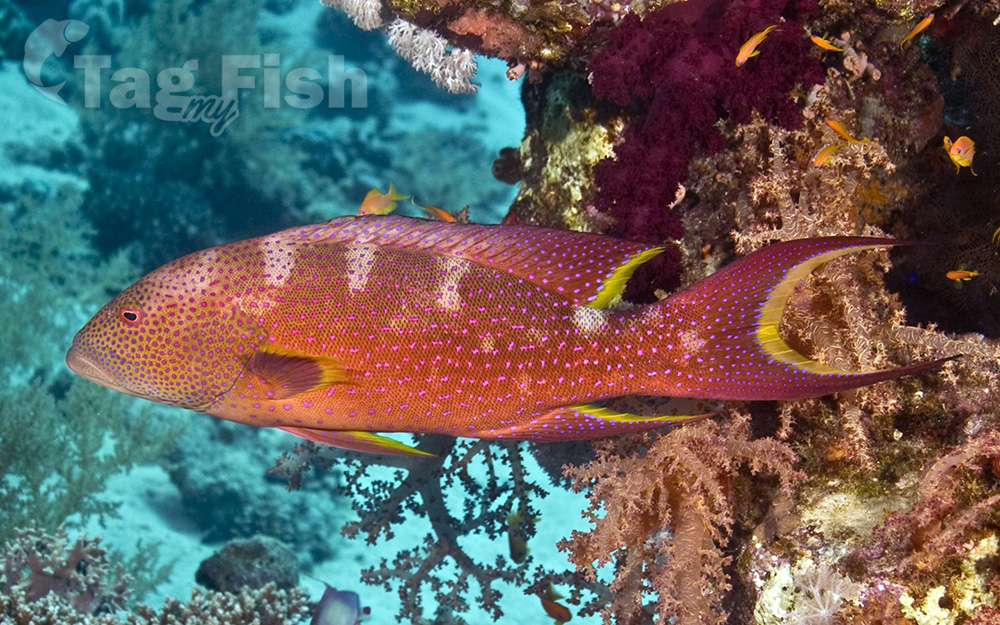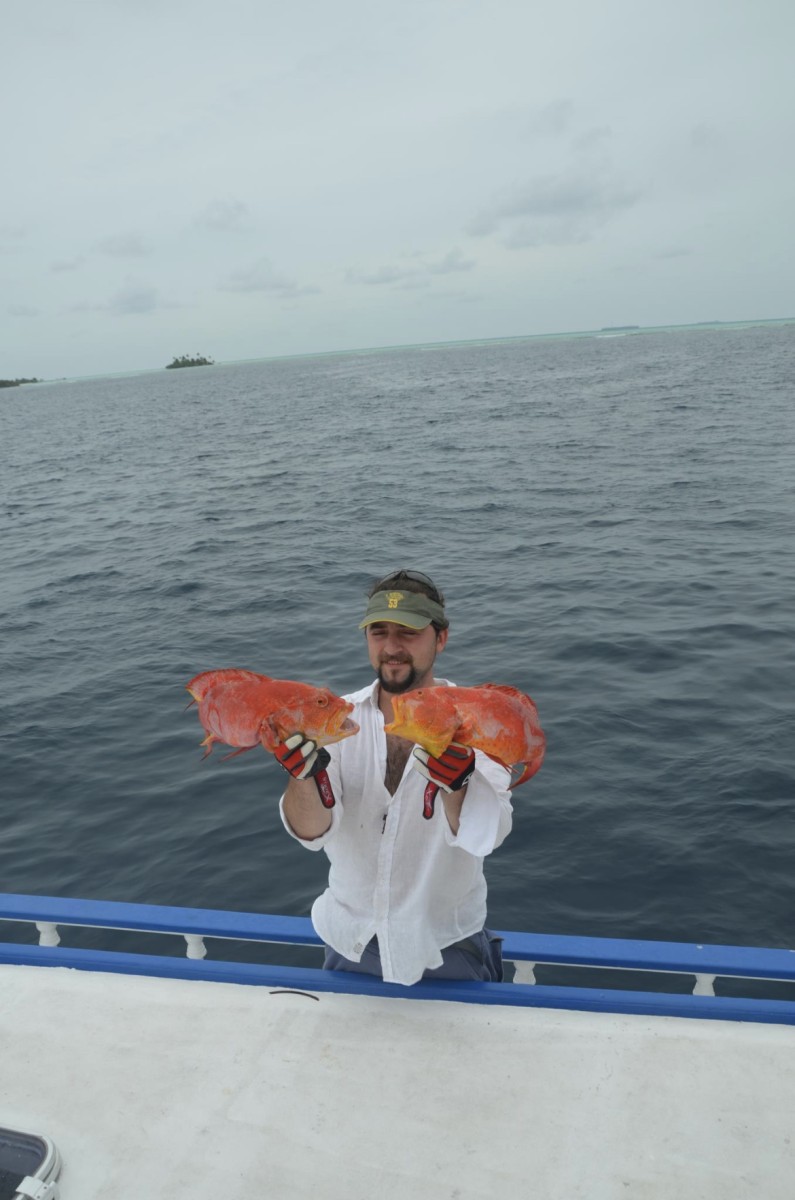Yellow-edged lyretail
(Variola louti)

Classification
General data
The yellow-edged lyretail has an oblong-shaped body on which the length of the head is longer than the depth of the body, the standard length of its body is 2.8 to 3.3 times its depth. The preopercle is rounded with fine serrations along its edge with the lower edge being fleshy.
There are three flat spines on the gill cover, which has a straight upper edge.
The dorsal fin contains 9 spines and 13–14 soft rays while the anal fin contains 3 spines and 8 soft rays.
The caudal fin is crescent-shaped with its upper and lower lobes extended and are around two times the length of the fins middle rays.
The overall colour of this grouper is reddish and it is covered in blue spots. The dorsal and anal fins have pointed posterior tips. They have a reddish colour on the upper body which frequently shades to orangish to white on the lower part of the body.
They are marked with many small bluish or pinkish spots on the head, body and fins.
The rear margins of the fins are yellow.
The juveniles appear to mimic goatfishes of the family Mullidae.
This species attains a maximum recorded total length of 83 centimetres (33 in), although 75 centimetres (30 in) is a more normal length, and a maximum weight of 12 kilograms (26 lb).
Distribution
The yellow-edged lyretail is has an Indo-Pacific distribution and is found from the east coast of Africa where it occurs from Durban in South Africa to the Red Sea through the tropical Indian Ocean east into the Pacific Ocean where it occurs as far north as southern Japan, south to Australia and east to the Pitcairn Islands.
In Australia it is found from Shark Bay in Western Australia to Ashmore Reef in the Timor Sea and from Cape York in Queensland south to Sydney in New South Wales Frederick Reefs and Coringa-Herald National Nature Reserve in the Coral Sea, as well as at Middleton and Elizabeth Reefs and Lord Howe Island in the Tasman Sea.
Recently it has been recorded twice (2018, 2019) in the eastern Mediterranean Sea off Cyprus, due either to aquarium release or introduction from the Red Sea through the Suez Canal.













